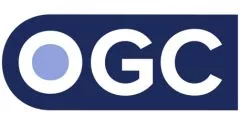Strategically managing a company's intellectual property ("IP") portfolio can increase its market share and generate revenue streams. So, it stands to reason that those responsible for protecting and commercializing a company's IP should understand the distinctions between patents and trademarks. However, many IP-related myths circulate within companies and can cause confusion.
This article busts a few of those myths and provides an overview of both patents and trademarks, including examples of what each one protects and the process of obtaining a federal registration, respectively. In a nutshell, patents protect inventions, while trademarks secure rights to brands, such as names, logos, or slogans.
Patents
- Myth 1: You can patent an idea.
Actually, ideas are not patentable; however, a tangible expression of an idea may be patentable.
- Myth 2: Patents give you a monopoly on your
invention.
No. Patents grant the owner – for a limited time – the exclusive right to make, sell, and use the patented invention.
- Myth 3: A patent should be kept secret.
No, to the contrary, there is nothing secretive about a patent. Once granted, the Patent Office makes the details of the patent and the underlying invention available to the public.
Patents protect inventions, designs for useful items, and certain plants. The United States Patent Office issues three types of patents: (i) utility patents that protect inventions of articles of manufacture, machines, processes, and compositions of matter that are new, useful and nonobvious, such as the typewriter; (ii) design patents that protect new, ornamental and original designs for useful items, such as the iPhone1; and, (iii) plant patents that protect asexually reproduced and distinct plant varieties, such as an apple tree derived by grafting (not germinated).
Under U.S. law2, patent protection lasts for 20 years from the date of filing a patent application. During this term, a patent owner may lawfully prevent others from making, selling, using, or importing the patented invention. However, the patent holder is neither obligated to make use of nor to sell their invention. In fact, many opt to sell or license their patent rights to others to manufacture, market, and sell the invention in exchange for an up-front fee or royalties on sales. In this situation, those arrangements are typically negotiated and memorialized in patent-specific licensing agreements, which, if done strategically, can pave the way for successfully commercializing a company's patent portfolio.
Some patent owners intentionally choose not to commercialize their patents and use them only to threaten litigation against other companies as a way of obtaining monetary settlements or forcing the payment of licensing fees. These types of patent owners are called non-practicing entities, patent-assertion entities, or, more pejoratively, patent trolls. It is important to note that although patent law is exclusively a federal issue, many states have enacted anti-trolling legislation due to the adverse impact that patent trolls can have on economic growth.
Obtaining a patent in the U.S. is a complex process for which the expertise of an experienced patent lawyer is recommended. Drafting a patent application requires close attention to the requirements imposed by the Patent Office for the specific type of patent being claimed. Likewise, filing the application and guiding it through the various stages of review at the Patent Office – a process known as patent prosecution – is equally complex.
Trademarks
- Myth 1: We are getting a global
trademark.
No, there is no such thing as a "global trademark." However, you can apply to register a trademark in various countries in which the mark is in use, sometimes benefitting from the original trademark application date in the first country in which the mark was registered.
- Myth 2: Our company name is filed with the secretary of
state, so it "trademarked."
No, the United States Patent and Trademark Office ("USPTO") is the only U.S. entity that grants federal trademark registrations for brands used in interstate commerce.
- Myth 3: Simply using alongside the company name ensures
that others can't use that brand name.
No. First, only federally registered trademarks may use the 'encircled R' symbol – – alongside the mark; and second, rather than preventing others from using it, the symbol acts as a 'no trespassing sign' alerting others that it is a registered and protectable trademark.
Trademarks protect brand names, slogans, and logos. A trademark may be a word, symbol, jingle, sound, or design that identifies the source of the goods or services in the marketplace. Examples include brand names like BMW, logos like the Nike swoosh, slogans like "Nationwide is on your side," and sounds like MGM's roaring lion.
Federal law governs the interstate use of trademarks3. Generally speaking, the USPTO will issue a trademark registration for marks that are distinctive, non-descriptive, and unlikely to cause confusion in the marketplace. For example, the name 'Google' for an internet search engine is distinctive and non-descriptive; whereas, the name 'Hire-A-Cab' for a taxi service likely would be considered too descriptive to qualify for a federal trademark.
Federally registered trademarks can be protected for as long as the mark continues to be used in interstate commerce, but only if certain documents evidencing the mark's continuous usage are filed at specific junctures. Trademarks indicate the source of origin of a good or service and provide to consumers a guarantee of quality and consistency concerning the product, good or service that the marks identify.
For example, upon entering a coffee shop that displays the Starbucks green mermaid, consumers understand that the mocha latte they get in Seattle will be the same quality as the one they purchase in Boston. The owner of a federally registered trademark has the right to use the mark in interstate commerce and to prevent others from using confusingly similar marks, which they would do by, for example, sending a cease and desist letter concerning the allegedly infringing mark, citing marketplace confusion and other factors.
Similar to patents, the federal trademark registration process is complex; and it is highly recommended to use the assistance of an experienced trademark lawyer who can advise on the viability of possible trademarks and evaluate trademark search results before filing the requisite documentation. Trademark counsels also liaise with the USPTO's examining attorney during the lengthy examination process; advise trademark owners on properly displaying the mark with the requisite notice symbols; negotiate trademark licensing agreements; and, strategize on effective ways to deal with confusingly similar marks and marketplace infringers.
A company's patents and trademarks are often its most valuable assets. Thus, it is critical that businesses take the necessary steps to understand the distinction between patents and trademarks in order to strategically protect and commercialize their IP assets, including seeking advice from experienced patent, trademark, and IP licensing lawyers.
Footnotes
1. U.S. Patent No D672769, "electronic device" (iPhone): https://image-ppubs.uspto.gov/dirsearch-public/print/downloadPdf/D672769
2. Article I, Section 8 of the U.S. Constitution grants inventors the exclusive rights to their discoveries and inventions for a limited time in exchange for the eventual surrender of their patent. And, federal law (35 U.S.C. Section 101 et seq) establishes the subject matter of what a patent may protect.
3. (15 USC 1051 et seq) and it is called the US Trademark Act and the Lanham Act. Each of the 50 states (but not DC) has its own trademark laws that govern marks used solely within that state and generally include a process to obtain a state-specific trademark registration.
The content of this article is intended to provide a general guide to the subject matter. Specialist advice should be sought about your specific circumstances.
We operate a free-to-view policy, asking only that you register in order to read all of our content. Please login or register to view the rest of this article.


